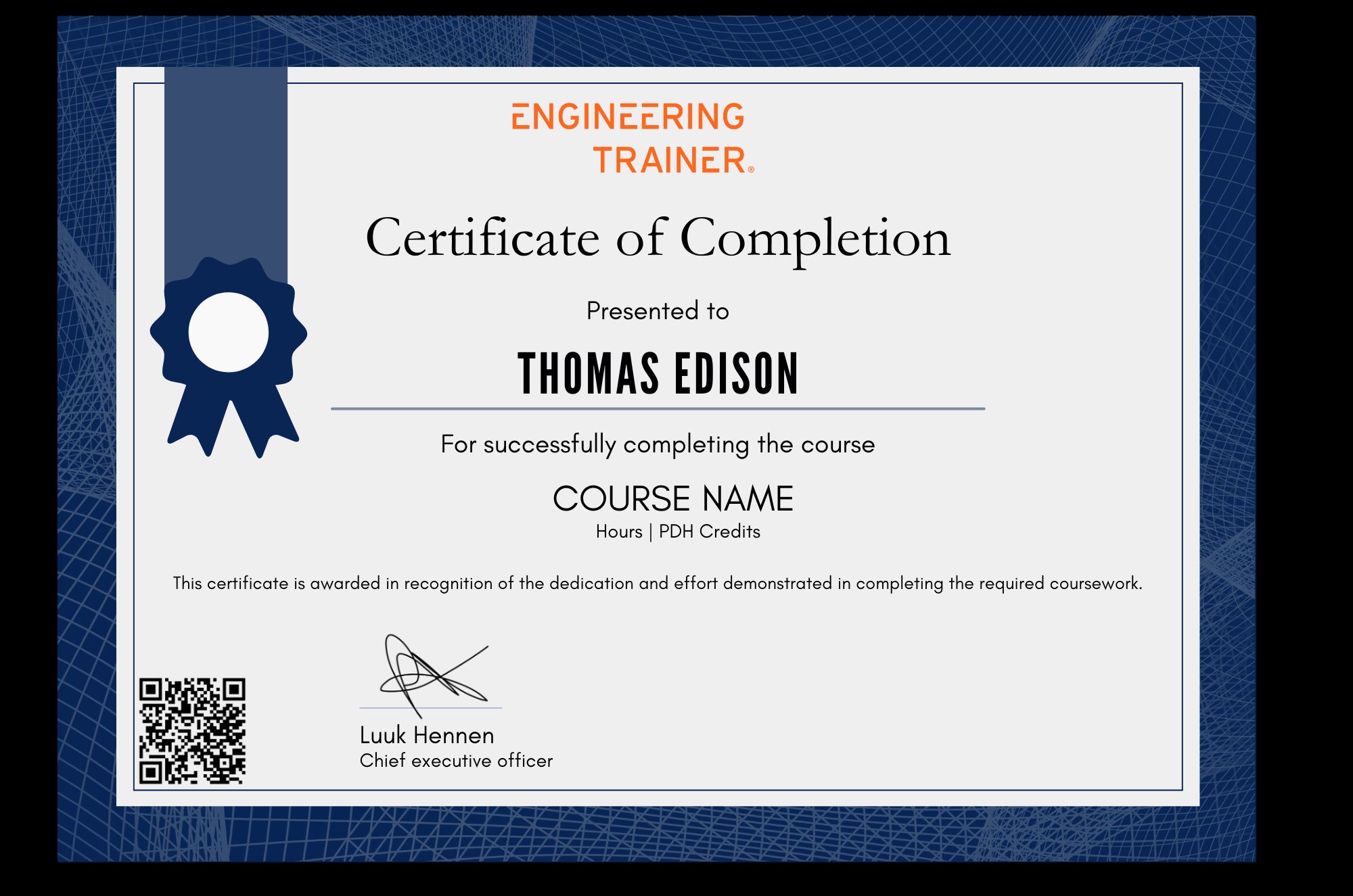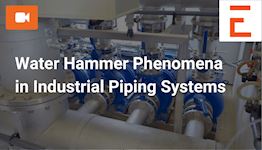Understanding Water Hammer Part II
Why take this course?
This self-paced course helps deepen your engineering judgment in Water Hammer in industrial piping systems. You will see how to design for pressure surge events in deluge, pipeline, firewater and sprinker piping systems, understanding the critical load cases, and how to determine mitigation measures that do not overly compromise the steady state. The course features video lectures and practical engineering cases shown as worked examples. A certificate with PDH credits is awarded upon successful completion.
What you'll learn
After this course you …
• have learnt to apply your understanding of Water Hammer in practical situations
• understand the trade off between mitigating for Water Hammer and the optimizing the steady state
• realise how pressure losses in a system impact Water Hammer pressure peaks
• know how to identify and evaluate critical surge sensitive locations in deluge, firewater and sprinker piping systems.
About the course
This course helps you develop your engineering judgment about Water Hammer phenomena in industrial piping systems and is Part II in our Understanding Water Hammer series. The focus of the course goes beyond explaining the underlying theory of Water Hammer (or Pressure Surge) to show how the characteristics of Water Hammer are determined in real-life situations. Participants are taken through worked examples based on projects, where the instructors use surge analysis software to visualise and compare Water Hammer load cases.
First you will learn about the use of Orifice Plates to reduce the effect of pressure surge and how to balance between their postive effects in a dynamic situation and the pressure loss they generate in the static situation. The impact of pressure losses due to bends, tees, valves and buried piping on Water Hammer is the next topic and here use will be made of an example based on a Firewater System The final module will see you looking at different mitigation measures for Water Hammer and Pressure Surge events, and take you through worked examples of a Sprinkler System.
Meet your instructor
Who should attend this course
• Those involved with performing pressure surge analysis and system evaluation.• Engineers that need to be able to understand reporting of pressure surge analysis for their system at hand.
Prerequisites
A basic understanding of piping systems is beneficial.Program & Details
-
Module 1 - Orifice Selection in Deluge Systems
1. Introduction
2. Theory - Orifices
3. Example A: Orifice in a Gas System
4. Example B: Orifice in a Firewater System -
Module 2 - Pressure Loss and Buried Systems
1. Introduction
2. Pressure Loss in a Straight Pipe
3. Pressure Loss in Bends & Tees
4. Boundary Conditions
5. Impact of Wave Speed on Buried Systems
6. Impact of Fluid Temperature
7. Example: Water Hammer in a Buried Firewater System
8. Summary -
Module 3 - Mitigation Measures in Industrial Piping Systems
1. Course Introduction
2. Mitigation Measures
3. Example: Pipeline Mitigation
4. Example: Emergency Shutdown
5. Summary
Certification


Why choose EngineeringTrainer
-
Unlimited Team-wide Access
-
Advance Technical Competences
-
Courses by Industry Authorities
Since using EngineeringTrainer our internal mentorship has a much more matured character.
Logan Chapman - COO at Chapman Consulting Inc.







